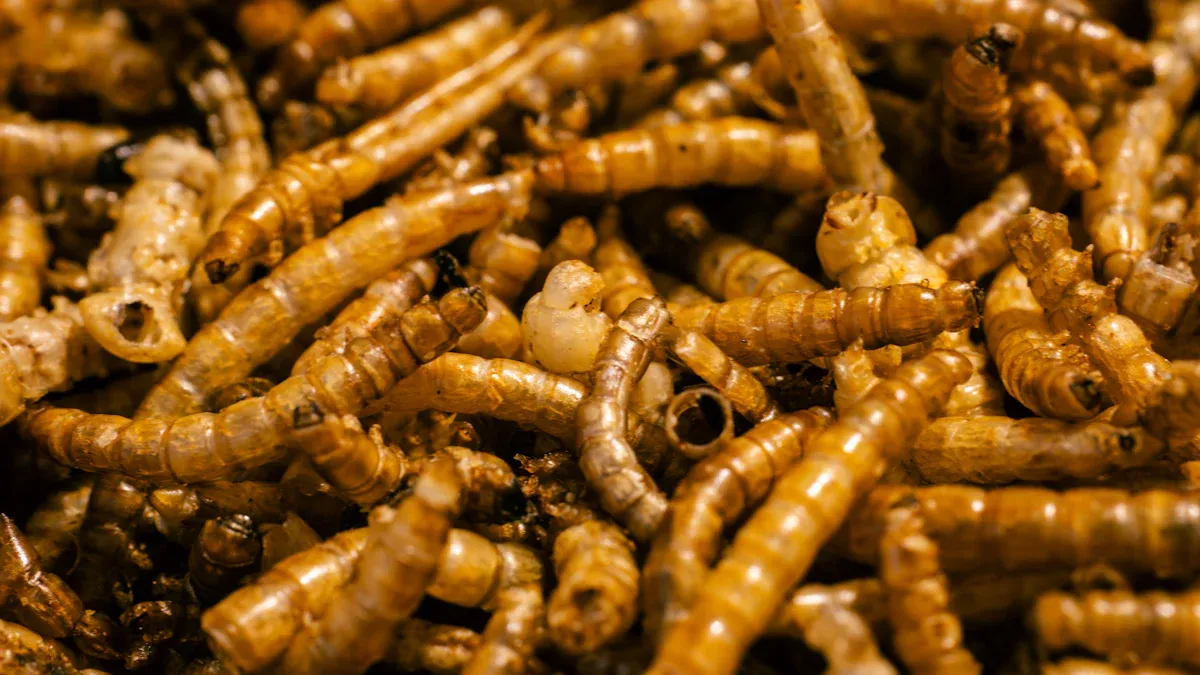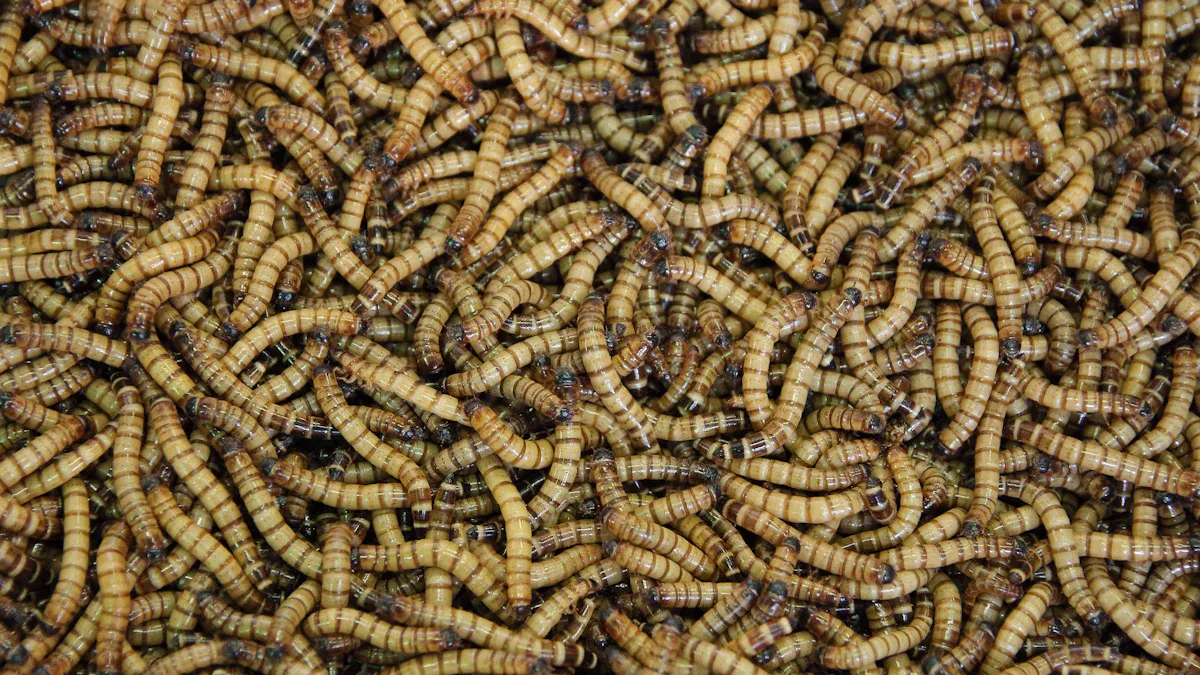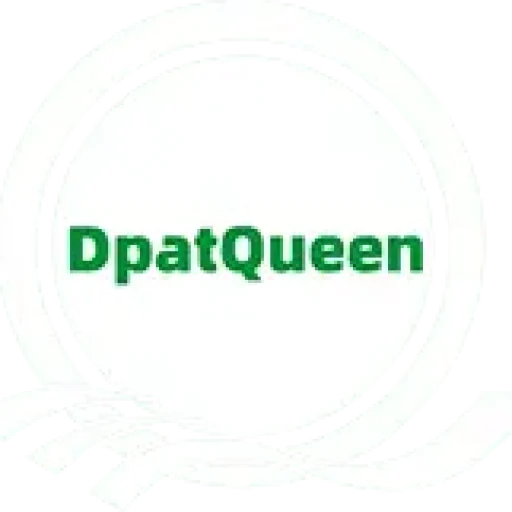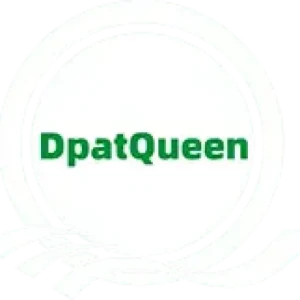
Mealworms are making waves across Europe as a sustainable protein source. Their crude protein content ranges from 40% to 75%, far surpassing traditional animal proteins. With 80% of their body weight edible, they’re a resource-efficient option. The European Union’s approval of mealworms as a novel food reinforces their safety and potential to tackle food security challenges. Dried Supper Mealworms are also stepping into the spotlight, offering an eco-friendly alternative for modern food systems.
Key Takeaways
-
- Mealworms are packed with protein, ranging from 40% to 75%. They are a good substitute for regular meats.
-
- Raising mealworms is better for the environment than farming animals. They need less land, water, and energy to grow.
-
- Mealworms can be fed leftover food, helping reduce waste and support eco-friendly food systems.
Nutritional and Environmental Benefits of Mealworms

High Protein Content and Nutritional Value
Mealworms pack a serious punch when it comes to nutrition. They boast a protein content ranging from 40% to 75%, making them a powerhouse compared to traditional protein sources. This high protein density makes them an excellent option for both human consumption and animal feed. To put this into perspective, here’s a quick comparison of protein content across different diets:
| Diet Type | Protein Content (%) |
|---|---|
| Wheat Bran | 68 |
| Wheat Straw | 76 |
| Other Sources | 20 |
Mealworms also thrive on diverse feed types, which can influence their nutritional profile. For example:
| Feed Type | Dry Matter Content (%) | Protein Content (%) |
|---|---|---|
| Control (Agar) | <10 | N/A |
| Vegetable Mix | >10 | Higher than control |
| Potato Cuttings | 29.9 | Comparable to control |
This versatility makes mealworms a valuable addition to Europe’s sustainable food systems. Their ability to deliver high-quality protein while adapting to various feed sources ensures they remain a reliable and efficient choice.
Low Environmental Footprint Compared to Traditional Livestock
Mealworms shine not only in nutrition but also in sustainability. Compared to traditional livestock like chickens or cows, they leave a much smaller environmental footprint. Life cycle analyses reveal some impressive numbers:
| Impact Category | Mealworms (Tenebrio molitor) | Broiler Chickens |
|---|---|---|
| Greenhouse Gas Emissions (GWP) | 23% less | Baseline |
| Non-Renewable Energy Use (NREU) | 18% less | Baseline |
| Agricultural Land Occupation (ALOP) | 70% less | Baseline |
| Terrestrial Acidification Potential (TAP) | 72% less | Baseline |
| Freshwater Eutrophying Emissions (FEP) | 6% more | Baseline |
| Feed Conversion Ratio | 3.61 kg | 4.91 kg |
| Space Requirements | High density, vertically stacked | More space required |
Mealworms require less land, water, and energy to produce, making them a game-changer in reducing the environmental impact of food production. Their ability to thrive in high-density, vertically stacked environments further enhances their efficiency, especially in urban farming setups.
Role in Circular Food Systems and Food Security
Mealworms play a vital role in circular food systems. They can be raised on residual materials from local food production, such as vegetable scraps or potato cuttings. This approach not only reduces food waste but also creates a sustainable loop where resources are reused effectively. Here are some key benefits of integrating mealworms into circular food systems:
-
- They serve as a sustainable alternative to traditional feed sources like fish meal and soybean meal.
-
- Their farming utilizes by-products from local food industries, promoting eco-friendly practices.
-
- By reducing dependency on imported feed sources, mealworms enhance food security and support local economies.
Dried Supper Mealworms, in particular, stand out as a versatile ingredient in these systems. Their adaptability and high nutritional value make them a practical choice for addressing food security challenges while minimizing environmental impact.
Sustainable Mealworm Production
Use of Food Waste in Farming Dried Supper Mealworms
Mealworms thrive on food waste, turning scraps into valuable protein. Farmers use materials like banana peels and watermelon rinds to feed Tenebrio molitor larvae (TML). This approach not only reduces waste but also boosts the nutritional profile of the mealworms. For instance:
-
- Banana peels increase fat content to 40.13%, compared to 32.70% from wheat bran.
-
- Watermelon rinds enhance fat levels to 32.84%, making mealworms ideal for fish and shellfish diets.
-
- High crude fiber diets improve growth performance, ensuring healthier larvae.
By repurposing food waste, mealworm farming supports circular food systems and minimizes environmental impact. Dried Supper Mealworms, in particular, stand out as a sustainable option for integrating food waste into farming practices.
Scalability and Efficiency of Mealworm Farming
Mealworm farming is scalable and efficient, making it a promising solution for sustainable protein production. Industry benchmarks highlight its advantages:
| Metric | Benchmark/Standard |
|---|---|
| Production Yield | 10% annual increase |
| Cost per Kilogram | 5% reduction per year |
| Net Profit Margin | 15-20% |
| Inventory Turnover Ratio | 6 times per year |
| Environmental Impact Score | 80% less methane, 90% less land usage |
Farmers achieve these results by optimizing farming practices. Mealworms produce 80% less methane than cattle and require 90% less land, making them a game-changer for eco-friendly protein production. Their high-density farming methods also ensure efficient use of space, especially in urban areas.
Innovations in Farming Technology
Technology is revolutionizing mealworm farming. AI-powered systems now monitor growth conditions like temperature, humidity, and light, ensuring optimal production. Advanced image recognition tools sort mealworms by growth stages, streamlining operations.
📈 The market for mealworm farming is booming, with a projected growth rate of 25.8% annually from 2025 to 2032. Valued at USD 170 million in 2023, it’s expected to reach USD 1340 million by 2032.
These innovations not only enhance efficiency but also reduce the environmental footprint of mealworm farming. As technology advances, Dried Supper Mealworms will continue to play a pivotal role in sustainable food systems.
Consumer Acceptance and Market Potential
Overcoming Cultural Barriers and the “Yuck Factor”
For many Europeans, the idea of eating insects still feels unfamiliar. This cultural hesitation, often called the “yuck factor,” stems from a lack of exposure rather than any real issue with taste or nutrition. However, attitudes are beginning to shift. Younger generations, especially those concerned about climate change, are more open to trying alternative proteins like mealworms. Food companies are also helping by introducing mealworm-based products in familiar forms, such as protein bars, pasta, and snacks. These innovations make mealworms more approachable and less intimidating.
Marketing campaigns play a big role in changing perceptions. By highlighting the environmental benefits and nutritional value of mealworms, brands are reframing them as a sustainable superfood. Cooking shows and social media influencers are also normalizing insect-based diets by sharing creative recipes and taste tests. As more people try mealworms, they often find the flavor surprisingly mild and versatile, making it easier to incorporate into everyday meals.
Addressing Safety and Regulatory Concerns
Safety is a top priority when introducing new foods, and mealworms are no exception. The European Food Safety Authority (EFSA) has conducted thorough risk assessments to ensure mealworms meet the highest safety standards.
The EFSA approved dried yellow mealworms as a novel food in the EU, emphasizing their nutritional benefits and sustainability. This approval ensures that mealworm products adhere to the same rigorous safety standards as other foods.
Mealworms are rich in protein and fiber, making them a nutritious alternative to traditional meat. EU legislation requires insect-based foods to meet strict safety guidelines, giving consumers confidence in their quality. Policymakers rely on science-based evaluations to regulate these products, ensuring they are safe for human consumption. This robust regulatory framework has paved the way for mealworms to gain wider acceptance across Europe.
Applications in Human Food and Animal Feed
Mealworms are incredibly versatile, finding applications in both human food and animal feed. For humans, they offer a sustainable protein source that can be used in a variety of dishes. Mealworms are high in essential nutrients like zinc, magnesium, and vitamin B12. They also provide all the essential amino acids, making them a complete protein source. Compared to beef and chicken, mealworms have a higher nutritional value and a much smaller environmental footprint.
In animal feed, mealworms are equally valuable. Their high protein content and efficient feed conversion make them an excellent choice for livestock and aquaculture. Studies show that supplementing pig diets with mealworms improves growth performance and nutrient digestibility. Mealworms also work well in fish and poultry feed, supporting healthy growth while reducing the need for traditional feed sources like fishmeal.
The market potential for mealworms is enormous. In Europe, the mealworm market is projected to reach $1.27 billion by 2030, growing at a compound annual growth rate (CAGR) of 25.8% from 2022 to 2030. The whole mealworm segment is expected to dominate, driven by its cost-effectiveness and availability. The animal feed segment is also set to lead, thanks to the nutritional value of mealworms and their growing use in animal nutrition. With products like Dried Supper Mealworms, the industry is well-positioned to meet this rising demand.
Mealworms, including Dried Supper Mealworms, offer a sustainable path forward for Europe’s food systems. Their benefits include:
-
- Efficiently converting food waste into protein.
-
- High nutritional value.
-
- Lower ecological impact than livestock.
-
- Superior feed-to-protein conversion.
By embracing mealworms, Europe can lead the way in creating eco-friendly, resource-efficient food solutions.
FAQ
What do mealworms taste like?
Mealworms have a mild, nutty flavor. Some compare them to roasted seeds or nuts. Their taste is subtle, making them easy to incorporate into various dishes.
Are mealworms safe to eat?
Yes, mealworms are safe for consumption. The European Food Safety Authority has approved them as a novel food, ensuring they meet strict safety and quality standards.
How can mealworms be used in cooking?
Mealworms are versatile. Add them to protein bars, pasta, or snacks. They can also be roasted, ground into flour, or used as a topping for salads and soups.
🛠️ Tip: Experiment with mealworms in recipes like stir-fries or baked goods for a sustainable protein boost!


